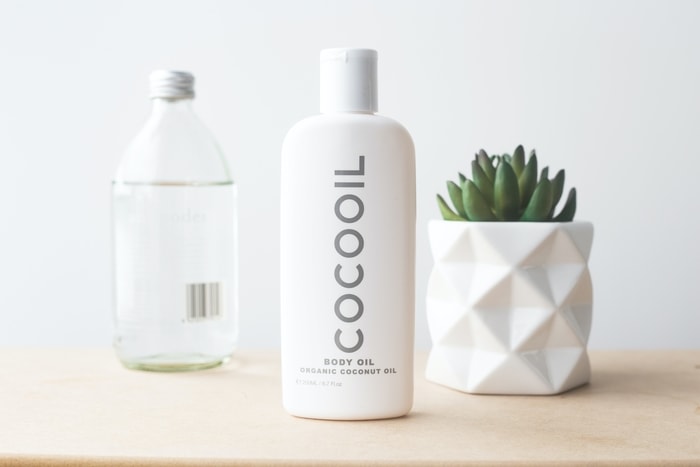What Is Blue Beauty? ?
Every day, 8 million plastic items enter our oceans, and with beauty products significantly responsible, it’s time the tides in the beauty industry have turned. In the words of Jeannie Jarnot ‘the focus has shifted from “being green” to “going blue”’: but what does this really mean for the future of beauty, how is ‘green beauty’ any different from ‘blue beauty’ and why should we be talking about this more?
WHAT IS ‘BLUE BEAUTY’?
‘Project Blue Beauty’ was launched by spa director and healthy beauty expert Jeannie Jarnot in 1996. After discovering the prevalence of hidden toxins embedded within the cosmetics she was using every day, Jeannie became dedicated to spreading the message of clean beauty. That is, beauty products which not only aim to optimise human health, but the health of the planet too.
Đang xem: What is blue beauty?
Thus, ‘Project Blue Beauty’ was launched; to spotlight the sustainable brands which are actively incorporating ocean-friendly practises throughout their supply chain, without compromising on the quality and functionality of the products themselves. In addition to advocating clean beauty products, naturally free from artificial chemicals and synthetics, that are best for our health. The ‘blue beauty’ movement has since gained immense consumer traction; encouraging industry leaders to make the switch to becoming green, and now also blue.

HOW DO ‘BLUE BEAUTY’ AND ‘GREEN BEAUTY’ DIFFER?
Unlike the ‘green beauty’ movement which aims to promote the use of environmentally and socially sustainable products overall, ‘blue beauty’ brands are particularly committed to the rehabilitation and protection of our oceans; upon which 94% of all life on Earth depends. This may be through utilising biodegradable or recyclable packaging, excluding the use of harmful chemicals such as oxybenzone and octinoxate which contribute to degradation of marine ecosystems, or through organising ‘Beach Clean-Up’ events. In contrast, ‘green beauty’ is an umbrella term referring to cosmetic products that are deemed eco-friendly in some more general way. Perhaps through donating to environmental charities, using exclusively natural ingredients, or through their proud commitment to being vegan or cruelty free.
HOW DOES THE BEAUTY INDUSTRY HARM ENVIRONMENTAL AND HUMAN HEALTH?
The main issue, of course, is plastic. From, toothpaste tubes to shampoo bottles, hairspray cans and makeup brushes: plastic is ubiquitous. Yet every plastic item ever used will inevitably find its way back to the ocean, accumulating in one of the world’s five ocean gyres to reside indefinitely in a grotesque ‘plastic soup’. Here, the plastic risks choking, decapitating and toxifying marine wildlife. Nonetheless, the greatest issue from the beauty industry today is in fact very small: ‘microplastics’. Microplastics are smaller, broken-down plastic particles, formed when plastic waste is exposed to UV rays, elevated temperatures and mechanical abrasion. Microplastics are synonymous to ‘microbeads’: small spherical pieces of plastic that are used directly in exfoliating personal care products, body wash, toothpaste and makeup.
Xem thêm: Ăn Trưa Tại Huế Ngon? Top 50 Món Ăn Huế Ngon Nhất Định Phải Thử Một Lần Cho Biết
These crumbs of large polymers are ingested by fauna, in particular plankton, invertebrates and small fish. Accumulating up the food chain, they poison marine life, and have even been proven to threaten human health. A study by WWF proves that the average person can consume up to 5g of microplastics a week, equivalent to the weight of a credit card, from seemingly benign sources such as beer, shellfish and salt. Easily absorbed by living tissue, microplastics can cause damage to the human endocrine system, affect blood pressure, fertility and contribute to multiple diseases such as cancer. Microplastics have therefore been deemed the ‘number one threat to humankind’.
WHAT IS THE BEAUTY INDUSTRY DOING TO HELP?
Fortunately, numerous beauty brands are making conscious commitments to reduce their chemical and carbon footprint in response to these issues. However, there still remains much to be done; giving rise to the power of consumer choice. In the words of Jillian Wright, founder of the Indie Beauty Expo: ‘your personal care is driven by awareness and intelligence and there is always room for more people to join this conversation. You hold the power in the way you spend your money, so spend it on brands that do good’.
Xem thêm: 10+ Nhà Hàng Tiệc Cưới Ở Tân Phú Giá Tốt Nhất, Quận Tân Phú
Therefore, if you have the means to do so, we would urge you to support brands in favour of the blue beauty movement over those that are not, in order to help save our oceans and build a more sustainable future. Here are some of top our recommendations for blue beauty brands on the market today.






Bình luận